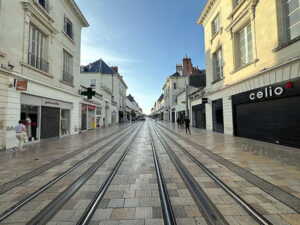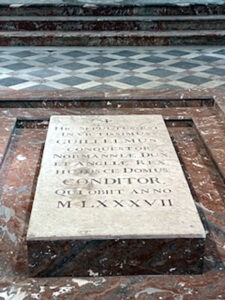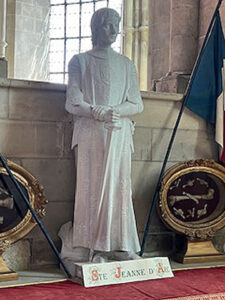Tours To Caen – day no. 5
We stayed a night in Tours. Tours was once the capital of France. I will always remember the Starbucks that looked convenient across the street. There I’d be able to simply order medium-sized, dark roast coffee as I am accustomed back in the states. It happened not to be found on the menu board. Just the usual latte and cappuccino options that are the norm here.
Just the usual latte and cappuccino options that are the norm here.
I know that you will enjoy this image of Tours main street at sunset. The public transportation street car tracks can be seen in the middle of the street and both sides are restaurants and upscale retail shops. Everything speaks to the prosperity of the town.
On to Caen. Laura with the Fox Valley Festival Chorus is to participate in a wreath laying ceremony to commemorate the D day landing, that ultimately resulted in the liberation of France from Nazi occupation. Caen was one of the objectives of the Allied forces. The small town was completely destroyed in the fighting between the Allies and the Wehrmacht. The French living here in Normandy seem to have a particular fondness for Americans, as the memory of the suffering of Nazi occupation lingers in memory.

We visited The Abbey of Saint-Étienne here in Caen. The Abbey and the townhall are attached, as is the cathedral and courtyard used by the monks for prayer and contemplation. Also located in the Abbey church is the grave of a very famous Norman, William The Conqueror. Our guide described for us in some detail the reputation of William, called “the conqueror” in France but in England, “the Butcher.” Another example of the conflict riven life of William, as Duke of Normandy he was a vassal of the King of France, and as you may remember, William invaded England, prevailed at the Battle of Hastings to become the King of England. Thus he was a vassal (an inferior) as well as the equal to the King of France, after all, he was the King of England. Go figure. An ambiguous situation. William’s grave was desecrated by the Revolutionaries 1793. They scattered William’s body parts around Caen.

Everyone has heard of Joan of Arc. She lead a French army to repulse the English at Orleans. Ultimately she was convicted of heresy and burned at the stake. She chose the wrong side… Also at the time a female wearing men’s clothing was not taken lightly. Saint Jeanne d’Arc has a chapel for veneration inside the cathedral at the Abbey. Yes, those are relics on each side of the statue.
I have not attempted to conceal my skepticism of the veneration of the Saints, of the mythos portrayed on a grand scale in the churches we have visited. Nevertheless all of these places are the remnants of French history, as well as another variation of the history of all of the human species. We are quite unable (without effort) to recognize the difference between administrative power/responsibility and our feelings of transcendence. A feeling of transcendence may be evoked at the sight of a rose stained glass window at the end of a cathedral nave, or by a flower. Is that feeling a divine whisper? Who can say.
The lesson which humanity struggles to learn is not to mix, not to amalgamate our respect, that response to transcendence, with our need to delegate administrative power to an individual, to a cabinet of ministers. Life and death are mysteries, light and darkness in infinite combination that we designate as “beautiful.”
That belongs to no human being.
PS Should I live in France would I become “Catholic”? Almost certainly I would. I could not bear to miss the community, the conviviality of relationship with my neighbors mediated by the great cathedrals which continue to be social centers of French society.